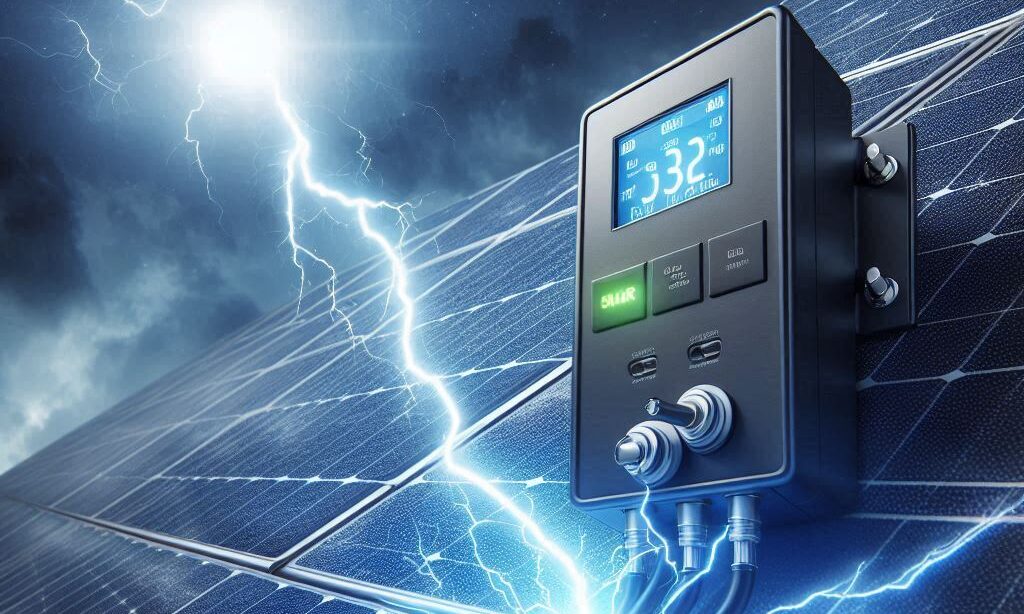As our world embraces the exciting shift to renewable energy, solar power systems have taken center stage as one of the top choices for both homeowners and businesses. These systems come packed with fantastic benefits, like slashing energy costs and shrinking your carbon footprint. But, hold on! They do have some vulnerabilities that shouldn’t be ignored. One of the key elements that often flies under the radar is surge protection. In this blog, we’ll dive into the reasons surge protection is a must for solar energy systems and the best ways to implement powerful measures to safeguard your investment! Let’s get energized about protecting our solar future!
Understanding Voltage Surges
A voltage surge is an unexpected spike in electrical voltage that can be caused by a variety of factors, including:
- Lightning Strikes: A direct hit or nearby strike can cause a dramatic spike in voltage that travels through electrical lines.
- Utility Grid Disturbances: Fluctuations in the electrical grid, such as switching or outages, can result in transient voltage surges.
- Equipment Malfunctions: Faulty equipment within the solar system itself, such as inverters or batteries, can generate surges.
These voltage spikes can cause significant damage to sensitive components of your solar power system, affecting performance and leading to costly repairs.
How Many Surge Protectors Do You Need?
When it comes to safeguarding your solar power system, a surge protection network is an essential powerhouse! It’s important to install these protectors throughout both the DC and AC power distribution networks to keep those critical circuits safe and sound.
The number of surge protective devices (SPDs) you’ll need can vary based on how far your panels are from the inverter. To maximize protection, we strongly recommend installing SPDs on both the DC inputs and AC outputs of your solar inverters, while also grounding both the positive and negative DC lines. Don’t forget to give some love to combiner circuits, control circuits, monitoring systems, and tracking systems—protecting these components helps prevent electrical interference and keeps your data flowing smoothly!
Proper Placement of Surge Protection Devices
For AC lines, put surge protection on each power conductor to the ground to ensure maximum safety. If your cable runs between solar panels are under 10 meters, be sure to install 1 SPD right by the inverter, at combiner boxes, or even closer to those amazing solar panels!
For those longer runs—if your DC cabling stretches over 10 meters—prepare to add more surge protectors at both the inverter and the solar module ends of the cables to keep everything running seamlessly. In a residential solar setup with microinverters where the DC cables are short, but the AC cables are longer, don’t forget to place SPDs at the combiner box to shield your home from any pesky transient surges.
To maximize the effectiveness of surge protection, proper placement is essential. Here are some best practices:
Type 1 SPDs: Positioned between the Solar panes/Grid line and the solar inverter, Type 1 devices protect against external surges, such as those caused by lightning.
Type 2 SPDs: Installed close to the inverter as possible, these devices focus on protecting against internal surges generated by the solar system itself.
Type 3 SPDs: Additional protection of critical components, such as charge controllers and battery storage systems, also known as point-of-use surge protectors, these devices are used for sensitive equipment connected to the solar system, providing localized protection.
Choosing the appropriate type of SPD for your setup is crucial to effectively mitigate surge risks.
Grounding and Bonding
Effective grounding and bonding are integral to surge protection. Proper grounding helps safely dissipate surge energy into the ground, while bonding ensures that all metallic components are at the same electrical potential, reducing the risk of electrical shock.
Here are key considerations:
- Grounding Conductors: Ensure all SPDs are properly grounded to provide a safe pathway for electrical surges.
- Metallic Bonding: Bond all metal frames of solar panels and mounting structures to minimize potential differences and electrical hazards.
- Regular Maintenance: After installing surge protection mechanisms, it is vital to conduct regular inspections and maintenance:
- Inspect SPDs: Periodically check the status of your surge protection devices. Many are equipped with indicators to show if they are functioning correctly.
- Replace When Necessary: Following a significant surge event, SPDs may become damaged and need replacement. Monitor their condition to ensure ongoing protection.
- Professional Evaluation: Schedule routine maintenance with solar professionals who can comprehensively evaluate your system and its protective measures.
Final Thoughts
Surge protection is a critical, yet often underestimated, aspect of solar power systems. By prioritizing surge protection, you can safeguard your investment against voltage spikes that threaten the functionality and longevity of your solar setup.
Whether you plan on installing solar panels or already installed one, Sensoniks Limited is here to provide you with quality protection you can count on.


